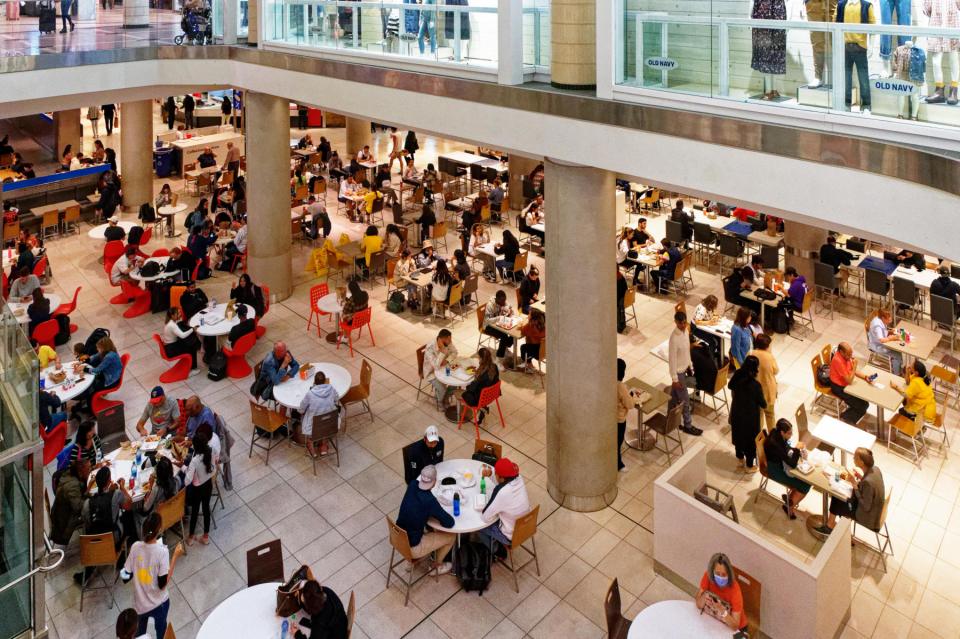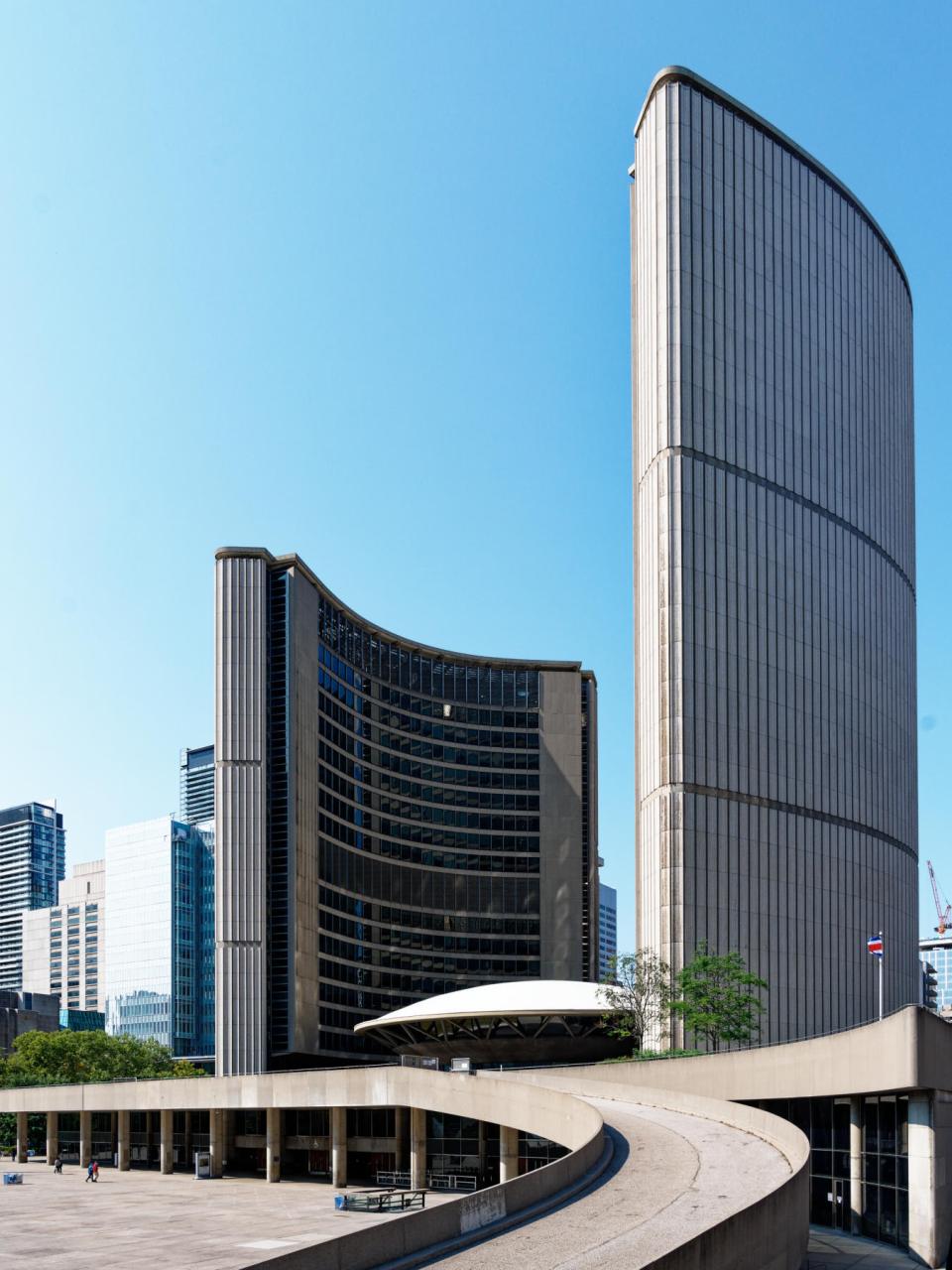Monday 26 August 2024 – Today was our last full day on the Ghan, and our final excursion, to a far away place with a strange-sounding name – Coober Pedy (pronounced “Peedy”). It was an exceedingly content-rich day; in other words this is a long post warning. I recommend you get yourself a cuppa or a glass of something stronger and settle down to read about the day.
After our stop at Alice and moving on overnight, the landscape had changed markedly.

We pulled into Manguri,

which was just a halt, really – no actual station or anything; just a gathering point so that people could hop on to the relevant coach for their chosen excursion. It was noticeable at this point that the temperature had dropped significantly now that we were moving south; it was very pleasant, in the low 20s, and a nice change from the 30+ temperatures we’d had further north.

We were booked on a general “explore Coober Pedy” tour, and I have to say I had no idea what to expect; all I knew was that it was the centre of a significant mining industry. The industry in question, or the quest which caused a lot of industry, is opals, and it’s a very significant one – Coober Pedy is estimate to produce around three-quarters of the world’s opal supply.
It turns out that mining opals is akin to gambling. It’s not quite the same; gamblers always lose, the only winner being whichever house provides the game. In opal mining, it’s possible to win big or lose everything; apparently there’s a phenomenon called “opal fever”, where miners simply get addicted to the search for the next big opal seam. The trouble is that there’s no certain way of locating a seam of opal-bearing rock except simply to dig a hole and start looking around. It was not long after our coach set out (on a dirt road for much of the way) that we saw the first evidence of what effect this speculative hole digging actually has on the landscape.

Every single one of those heaps of rock, which are called “mullock heaps”, marks the presence of a hole that someone has dug in search of opals. They are everywhere on the landscape.

Apparently, even if nothing is found, the holes are not filled in with the mullock that’s been excavated, as this would result in unstable and unsafe terrain; so the holes just remain there, with a heap of mullock beside each one.

Some digging obviously uncovers rich seams which get expanded as they’re explored,

and some appear sufficiently promising that drills are set up to explore further

with blowers to clear the excavated dust away – drill on the left above, blower on the right,

and a blower in action above.
There are two main types of drills – small-bore ones for initial exploration, and larger-bore for creating a main hole from which tunnels can radiate out in the search for these precious mineral creations.
The process of claiming territory to mine is quite straightforward, but the manner of extracting opals is delicate and precise as opal is a fragile material; it doesn’t lend itself to industrial-scale large mining machinery, which is why the landscape is dotted with holes and heaps. Anyone can basically dig a hole anywhere for initial exploration. If such exploration yields a sufficiently good prospect of finding opal seams among the rock, then a (renewable) claim can be lodged (and paid for) for a certain area around the hole and for a certain period of time – maybe 20 metres for three months – and the person who lodged that claim puts pegs to mark the claimed area. They are then not allowed to move the pegs or to lodge another claim until the expiration of the current one, which puts a stop to people making multiple explorations. And there’s absolutely no guarantee that an exploration will find opals – it’s entirely a gamble.
The base rock in which opals form is sandstone. Water, seeping into the ground, picks up silica from the sandstone and then settles into cracks and other voids in the stone. Over millions of years, the water evaporates, leaving behind deposits of silica spheres; if these spherical silica deposits are arranged neatly in a uniform lattice arrangement, the interference and diffraction of light between the layers creates the colours which mark out a valuable opal; if irregular, then the result is called “podge” and is not particularly valuable. Extracting opal from rock requires extreme care – if an opal is cracked it loses all its value, so it is basically a manual operation, which explains why the good stones are so expensive.
The landscape this extraordinary industry produces is unique and strange.
You’ll notice that the landscape is utterly devoid of trees, which means that early settlers and miners were a tad short of the usual materials for building houses. The solution was direct and simple – to build dwellings underground. The stone is soft enough to make excavation easy, and yet firm enough not to collapse; the resulting dwellings (like cave dwellings everywhere, of course) are stable in temperature throughout the year, which is good, since outside it can be anything from below freezing up to 50°C. We got a chance to see what an underground house looked like later on in the day, but there were a few other things to look at first.
Our driver, Jason, described the terrain, as he drove us towards a particular viewpoint, as having once been seabed. Clearly, the waters had receded, and when they did, a remarkable process of erosion began, and what was seabed was worn further away in some places but not in others. This left some significant outcrops of stone which appeared to have “broken away” from the rest of the landscape. Actually, they were just remaining bits of seabed, but their appearance was such that they re called
 The Breakaways. It’s an extraordinary landscape.
The Breakaways. It’s an extraordinary landscape.




Having admired this amazing vista for a while, we headed back to Coober Pedy. The houses there are not all underground dwellings. Some are perfectly normal houses

and some are sort of hybrid, with some areas above ground and some below.

Underground houses are marked by ventilation shafts

which you can see sticking up above ground here – clearly, there’s a need to get fresh air circulating around the dwelling.
It’s not just housing that has gone underground; so has worship. The town features two underground churches. We were taken as a group to the first one, a Serbian Orthodox church, which is built into a hillside.

Inside, one can see, by looking at the roof and walls, that it’s been created by two types of drilling machine – square and round.

It’s an attractive interior


Jane and I also visited the Catholic Church in the town.



In between visiting the two churches, we had an underground lunch

which was served up in the excavated but no longer active areas of an opal mine that was still in use. We had a quick tour before sitting down to lunch,
where one could “noodle” (sort through loose stones in search of opals) or “pick” – chip away at the rock.

Whichever method one chose, a useful implement to have to hand was a “black light”, i.e. an ultra-violet light, whose beam illustrated the presence of opals within the rock.
This was technology not available to the original settler miners. Apparently what they did was to drill until they heard the sound of glass being broken, which meant that they’d found some kind of a seam, and then proceed by hand.
Outside the lunch location was some machinery which showed that the mine was still active.


as well as an exhibit of an old-fashioned windlass, which would once have been used to hoist up excavated rock.

The final component of the day was to visit a combined opal museum and underground dwelling.

Our time there started with a short lecture about the different sorts of opals (doublets, triplets, etc) and how they’re produced, with careful polishing to bring out the colours. Then we were shown round the underground dwelling which is part of the operation. It really is just this house, you know? but with no windows.
The first three pictures below are of a section excavated in the 1920s and inhabited by a miner; the remaining pictures are of the modern extensions!
Some people professed themselves uncomfortable with the idea of sleeping in the bedroom, which could, of course, be utterly and absolutely black and carry with it the extreme risk of barking your shins or banging your head during any nocturnal wanderings. I think it would be great, provided there was just a tiny bit of illumination.
There was, of course, a retail opportunity.


Outside, one could wander up on to what was effectively to roof of the house – you can see the ventilation shafts.

Its location gave a good view over the town of Coober Pedy.

The town’s location and unique geology have made it a great location for films where utter desolation is needed (e.g. Mad Max), to the extent that the town has erected its own version of the Hollywood sign.

Wandering about, one can see that there is merciless merchandising of the underground theme.

Sadly, we didn’t have time to get to the underground bar before we had to go back to the train. En route, Jason and the other coach drivers stopped short of the train in a location which enabled people to take a shot of its entire length,

and was, of course, the location for a feeding frenzy of selfies.

We arrived back at the correct side of the train to find that the crew had set up drinks and canapes outside

which one optimist used as the venue to propose to his girlfriend.

(She said “yes”, apparently.)
And so ended an exceedingly unusual, interesting and enjoyable day, full of strange landscapes and bizarre life choices. The morrow would see us arrive into Adelaide and the end of our journey on the Ghan, so stop by these pages to see what happened when we arrived.










































 (this last, showing a host of ATMs in a pretty much deserted hallway, reminds me that this was quiet because the sun was shining; during the winter, I bet it’s much busier.)
(this last, showing a host of ATMs in a pretty much deserted hallway, reminds me that this was quiet because the sun was shining; during the winter, I bet it’s much busier.)




























